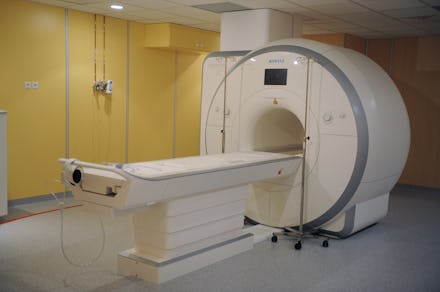A new startup is making a cap that lets you read people’s minds

Mind reading is the ultimate superpower. Mary Lou Jepsen, formerly of Facebook’s virtual reality team, is trying to make it possible with her new project, Openwater.
It would all take place through a beanie-style hat — and she thinks it could become reality within just eight years, with prototypes due next year.
How to build a telepathic hat
We won’t know much about how such a device would work until the company has filed for patents, but the basic idea is to shrink a room-sized MRI machine down to a wearable size.
A specific type of MRI, called a functional MRI or fMRI, targets the brain to see what areas are working hardest during a particular task, based on where oxygen is going.
That’s what the hat would mimic by pairing temperature sensors and small LCDs inside the hat. Jepsen’s approach relies on what’s called near-infrared light, which with the right settings can penetrate a human body. But that light is absorbed by blood in ways that change based on how much oxygen the blood is carrying — mimicking brain MRI scans.
And scientists have already begun showing that by looking at just a scan of the brain of someone watching a video, they can begin to reconstruct what that video looks like. That, Jepsen argues, combined with the portable scanning technology, can become the basis of individuals communicating visually directly between brains.
She’s not the only entrepreneur looking to crack mind reading, but the Openwater system would be non-invasive, unlike, for example, “neural lace” systems that would rely on electrodes embedded directly in the brain.
If you think all this mind-reading stuff still sounds a little creepy, even without brain surgery, Jepsen understands your concerns. She’s thought about the privacy issues surrounding what this kind of mind-reading technology would bring, and wants to have global-scale conversations about the ethical implications.
In an on-stage interview with Recode, she said that some people may want to give the devices unfettered access to thoughts, but that they would come with some sort of filter system. Perhaps you have to want to “think into” the device, or you could choose to filter certain topics. “That’s what we’re working on, is a way to do [privacy controls] that’s baked in at the bottom level into the technology,” she said.
The same technology could change how we diagnose diseases
It’s not just about reading minds — Jepsen also envisions putting the technology in T-shirts, bandages or bras for the disease-targeted applications. “Implications are broad for detection and treatment of cancer, cardiovascular diseases, internal bleeding, mental diseases, neurodegenerative diseases,” as the website for Openwater puts it.
MRI machines are one of the most important medical scanning technologies, since they don’t use x-rays, which can have side effects. But the large, clunky machines are incredibly expensive to run — in 2014, an MRI scan in the U.S. costs an average of $2,611. And while the technique is painless, it’s not necessarily pleasant, since the patient has to lay as still as possible in a loud, thumping tube.
Jepsen has a deep personal appreciation for MRI machines, since one diagnosed a brain tumor during her doctoral studies. What that big machine does is briefly magnetize atoms to create a 3-D image of a body’s tissues.
The near-infrared light system Jepsen is working on would mimic an MRI by registering the presence and absence of blood — so lighter and darker areas could flag, for example, internal bleeding, a tumor or a clogged artery.
But by bringing the consumer technology mindset to what an MRI does, Jepsen believes that she can make diagnostics cheaper and better — and do so more quickly than the medical technology sector.